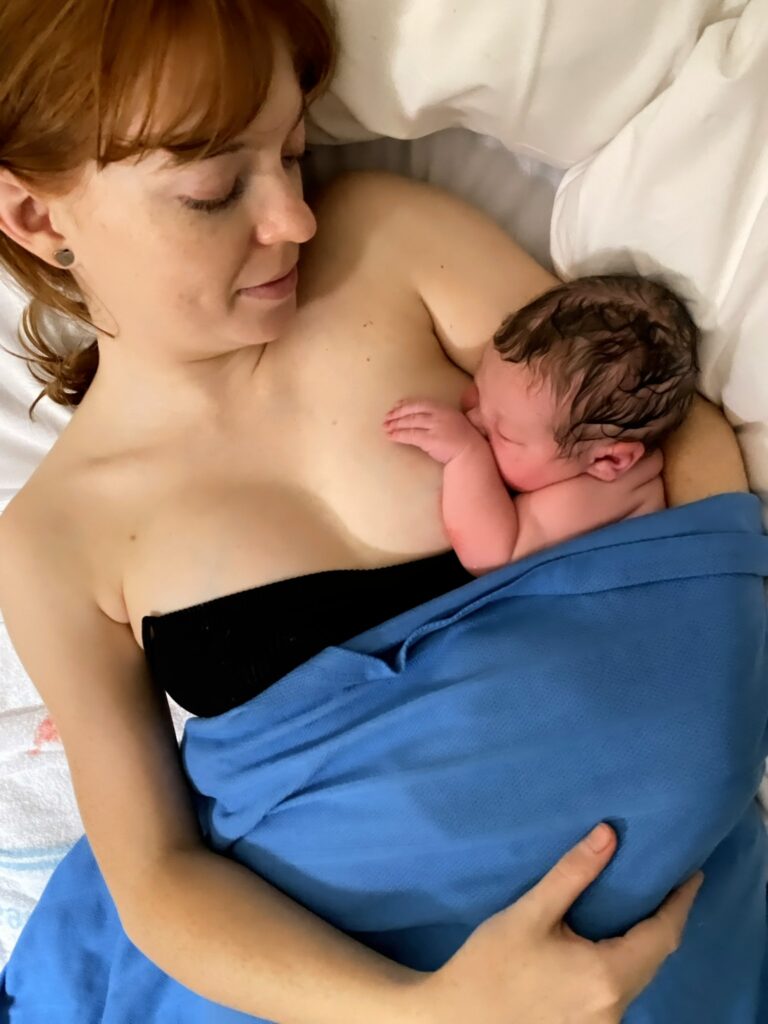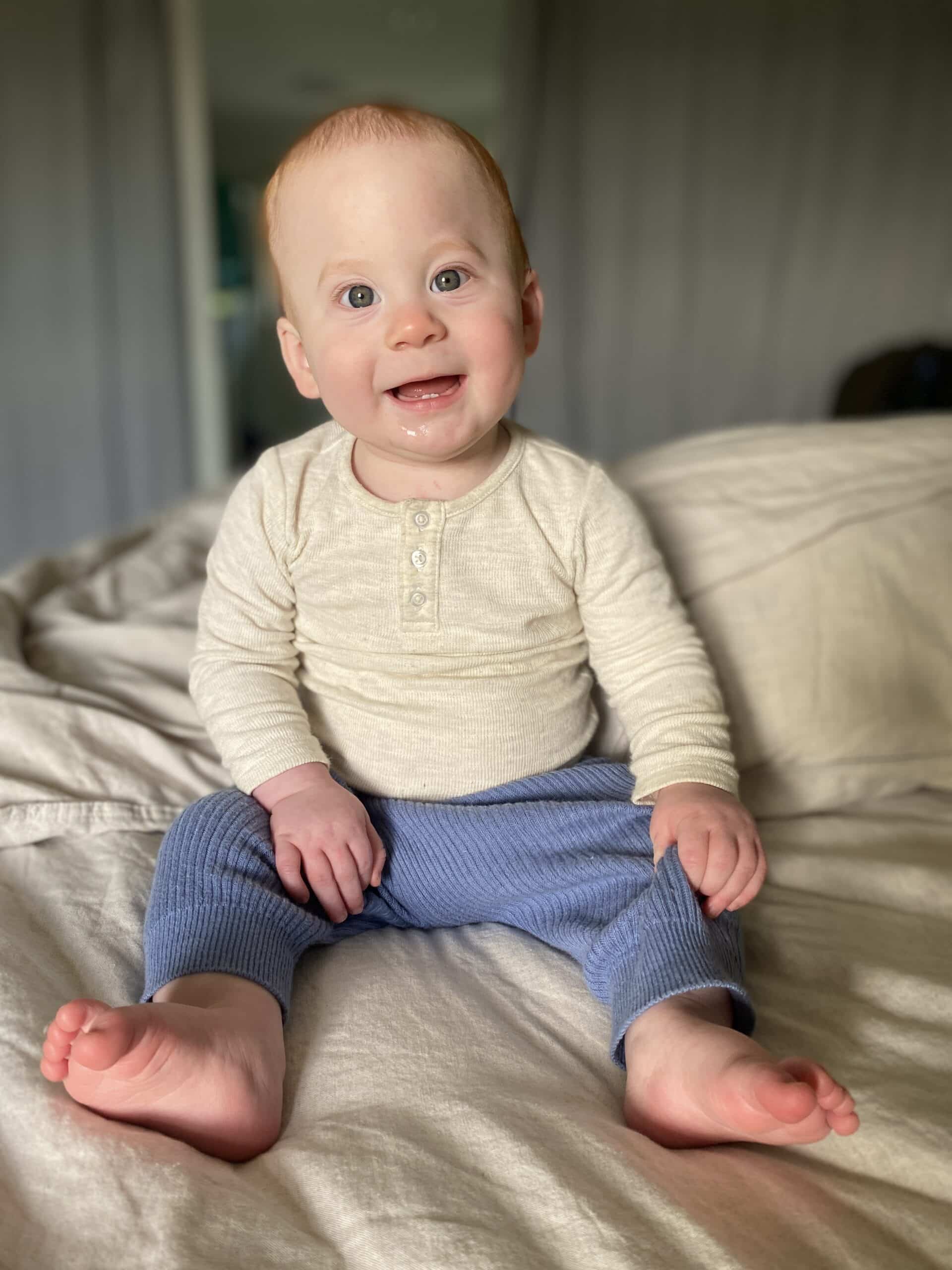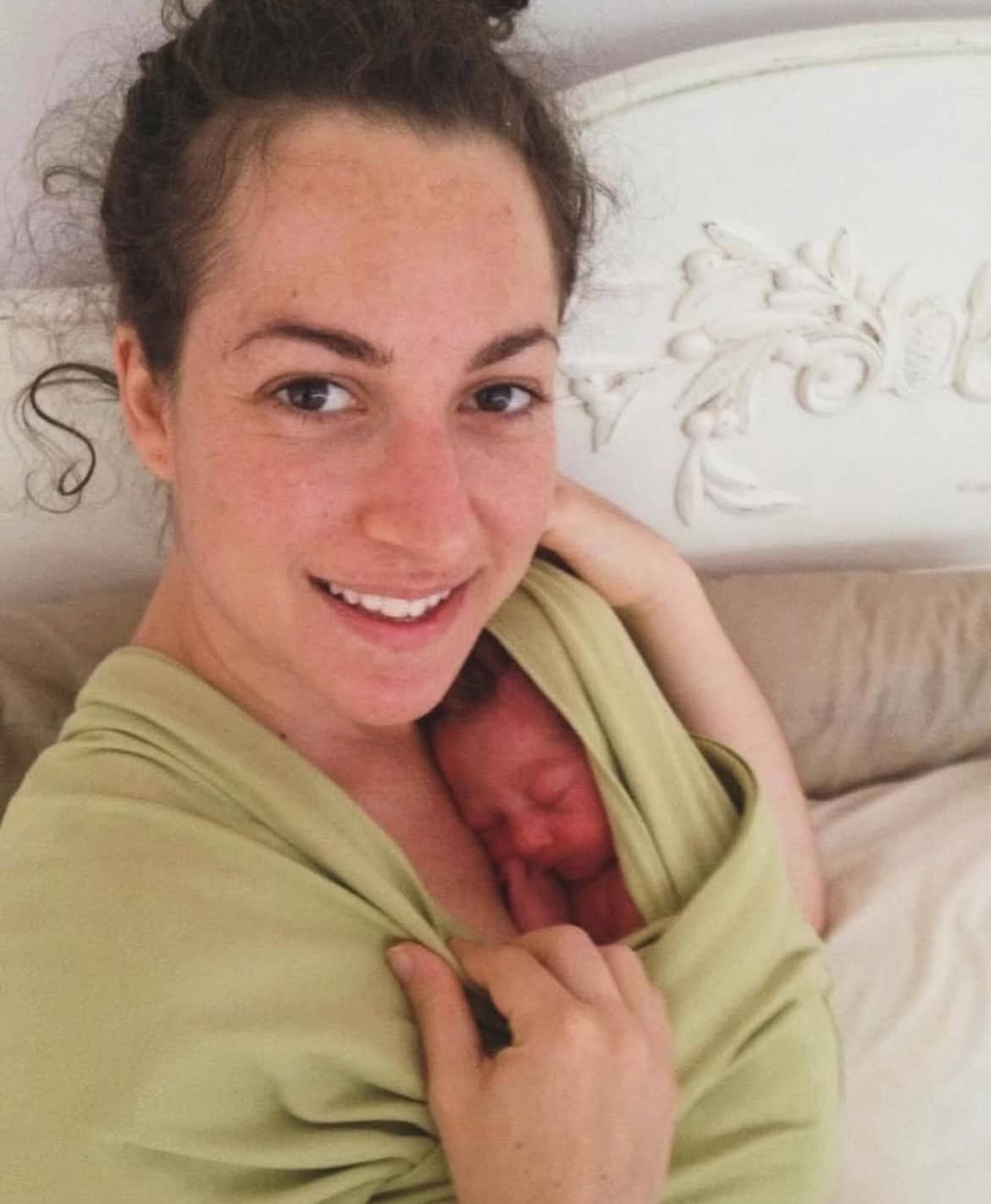Podcasts Diana
EPISODE 374
Diana

“We’d been married for a couple of years but we weren’t planning our pregnancy. I wasn’t totally on board with having a baby so I was happy to go with the flow and trust the process without doing any preparation. My husband’s three sisters are really into birth, they’ve had homebirths and they’ve all had big babies and they told me a lot about birth but I don’t think I was really open to listening.
“We moved from Sydney to the Central Coast halfway through the pregnancy and I went through the public system and didn’t have my first appointment till 22 weeks. I spoke to one of the midwives close to my due date who even told me I was young, I’d pop the baby out and then go home.
“During my pregnancy my sister-in-law had organised a birthing class with a doula. I was 37 weeks when we did it and that was all my birth preparation. At the time I was still so scared and not willing to talk through it. I think she could feel that I didn’t want to talk about it so she helped my husband with skills to support me during labour.
“My early labour was textbook; cramping and loose bowels. Once I finally worked out I was in labour it was about 11pm and that’s when I realised that I wouldn’t be able to sleep. I went downstairs to watch TV and bounce on the birth ball and within a few hours things were getting quite intense. I woke up my husband and it was a little bit chaotic because I hadn’t packed my bags. We left for the hospital at about 6am and the drive was horrible, especially considering it was peak hour. I was 7cm once I arrived which I was pretty happy with. I definitely had the rush of adrenaline at the hospital and I panicked about not being able to do it so I was keen to explore pain relief options but the midwife was at her desk and not listening to me and just telling me I would be fine.
“My husband went to move the car and that’s when labour really ramped up and that’s when my body started to push. I had no idea what to expect and I started to get quite panicked so with each contraction I was holding on and not surrendering or relaxing. The midwife didn’t offer any support so when I asked for an epidural she made a list of demands. It took about an-hour-and-a-half to arrive and once it was in she checked me and I was 9cm with a small cervical lip. I was much more relaxed and felt like I could finally think and talk once the epidural kicked in.
“From there I was so numb that I couldn’t feel anything. The midwife told me she was going on her lunch break and told me just to watch the screen for the contractions. When it was time to push I told her that I couldn’t do it because I couldn’t feel anything. She turned the epidural off without telling me so all of a sudden I could feel everything and I went into a panic and just freaked out because everything hurt. The obstetrician was called in and offered to use the vacuum and I was so tired I agreed but then Anastascia came out in one push; not head first – she came out head and body all in one go. That’s when they told me that I’d torn pretty badly and they would need to take me to theatre to get stitched. I was there for a couple of hours.
“It wasn’t until the next morning that an obstetrician came in and asked how I was feeling. I was so swollen that I couldn’t put my legs together. She told me they thought I’d had a 3C tear but upon repairing she realised it was a fourth-degree tear. She told me that I may have incontinence and I was just shocked, I had no idea what she was talking about. It was a lot to take in but fortunately I told the obstetrician that it didn’t feel like I’d lost muscle control and I could hold in gas. I was told that I’d be contacted at six weeks to do physio through the hospital.
“It was hard to be happy about the future because there was so much uncertainty about me and what I could do. But because the recovery wasn’t going too badly, I did start to feel a bit better, even though I was in pain. When my husband went back to work at six days postpartum, I started to notice strange symptoms like gas coming out at random times, I had a fever and my heart rate was fast. When I changed my pad there was a funny colour there – it was brown – and it was faecal matter. I went back to the hospital and they confirmed that there was a lot of inflammation and a recto-vaginal fistula which is an open hole from the rectum to the vagina which explained how faecal matter had been coming out of me. I was in disbelief; it was very overwhelming. They put me on IV antibiotics and they were going to monitor me over a few days and if they didn’t see an improvement I would have to have a colostomy bag fitted.
“I felt like it was really important to breastfeed because I needed to take something into my own hands; I wanted to be in control of something. At the time it was easy to do; I lay on my side and fed her. I was on antibiotics for three months but luckily I avoided having the colostomy bag. I took things really slowly with the women’s health physio and although I had a tiny bit of urgency to go to the toilet I had no accidents, thankfully. I was told that I would have to see a gynaecologist before I had intercourse and her words were: you can have intercourse but your husband will probably feel your internal stitches.
“I messaged my doula and explained what had happened and she was great to talk to. It really made me think that for my next birth I wanted her by my side. I got to a time when I felt well within myself and felt physically and mentally ready. Anna was about two when we decided to try again. I felt that I really wanted a redeeming birth. I had seen an obstetrician four months after I’d had Anna and he was supportive of me having another vaginal birth because I’d healed so well and because there was a lot of evidence that perineal support during the pushing stage was a great way to prevent significant tearing.
“I was happy to go through the public system and have the support of my doula. I had horrible morning sickness; I was vomiting about thirty times a day and I had to be hospitalised to get IV fluids. I started to feel better at about 18 weeks.
“My doula sent me so many studies about vaginal birth after tearing and my husband read everything and felt really prepared, too. I listened to lots of podcast episodes because I just wanted to hear different birth stories and I did your perineal massage guide. Things took a turn when the obstetrician told me I wouldn’t be able to have a vaginal birth, I’d need to book in a planned caesarean. It was like I would be an inconvenience if I tore again. I felt like I wasn’t being heard and I didn’t feel comfortable having him as my care provider. After the appointment I was talking to a friend who had a friend in MGP and she managed to get me into that program. The obstetrician that oversees the MGP mums was happy to support me, too.
“I was starting to get panicked at the end of the pregnancy because I was huge and I was worried about tearing again. I started talking to my midwife about induction but she said that we’d do a stretch and sweep at my next appointment. At 38+6 after doing yoga I felt a drop in my belly; my belly was so low. After lying down in bed my waters broke. My contractions were two to three minutes apart so I called my midwife and my doula to let them know. The contractions felt quite strong and I had the feeling that I needed to go to hospital quite promptly and when I was in the car the contractions were on top of each other and they were so intense. With each contraction I was starting to push – it was just happening – but I didn’t say anything. My husband got the wheelchair and once we got to the birthing suite my midwife and doula were there.
“I just dropped to the floor and I started pushing with each contraction. The midwives came in and within the hour he was born. I was pushing but not as hard as I could because I was worried about tearing. I was mindful of breathing the baby out and being as calm as possible. My midwife used a hot compress and counterpressure while I was pushing. It feels so much better to have an unmedicated birth because you can work with your body, you know what feels best, how to make space for your baby to move down and out.
“I was freaking out after the birth especially when the midwife was checking me and she told me that I’d had a second-degree (almost a first-degree) tear, I was over the moon. She brought an obstetrician in for a second opinion just to make sure there was no internal tearing and she stitched me after she checked.
“It was so different this time, to have skin to skin with my baby and see my placenta. We didn’t cut the cord for almost an hour; it was all so much better this time. It was definitely the redeeming birth that I needed.”

Topics Discussed
Doula, Epidural, Fistula, fourth-degree tear, MGP, Physiological birth, second-degree tear, Spontaneous labour, Two Babies
Episode Sponsor
BodyICE Woman was created by Olympic Champ and mum of two Lydia Lassila after the birth of her first son in 2011. She realised very quickly from her own experience, a desperate need for ice and heat packs that would help women recover post childbirth and support them throughout breastfeeding. The range includes a Perineum Strip and Breast Pads that can be used as ice or heat packs. When frozen, the perineum strip provides cooling relief to the perineal area which may be irritated, swollen and tender from childbirth. You can also use it to treat Symphysis Pubis Dysfunction (SPD) and haemorrhoids. When heated, the perineum strip can be used during the 2nd stage of labour to soften the perineum and help reduce the occurrence of perineal trauma.
Enjoy 30% off the BodyIce Woman range with the code: AUSBIRTH30
Categories
Related Products
-
Birth Combs: Harness Your Body’s Natural Pain Relief
$24.95Crafted from smooth, natural wood, our birth combs activate specific pressure points in your hands that trigger your body’s innate pain-relieving responses.
Join the conversation
Sign up to get the latest updates, freebies, podcast releases straight into your inbox
@AustralianBirthStories
Follow along with us
@AustralianBirthStories
Follow along with us
@AustralianBirthStories
Follow along with us
@AustralianBirthStories
Follow along with us
@AustralianBirthStories
Follow along with us
@AustralianBirthStories
Follow along with us
@AustralianBirthStories
Follow along with us
@AustralianBirthStories
Follow along with us
@AustralianBirthStories
Follow along with us
@AustralianBirthStories
Follow along with us
@AustralianBirthStories
Follow along with us
@AustralianBirthStories
Follow along with us






